The First 8 Crops To Be Domesticated By Humans: The Neolithic Founder Crops
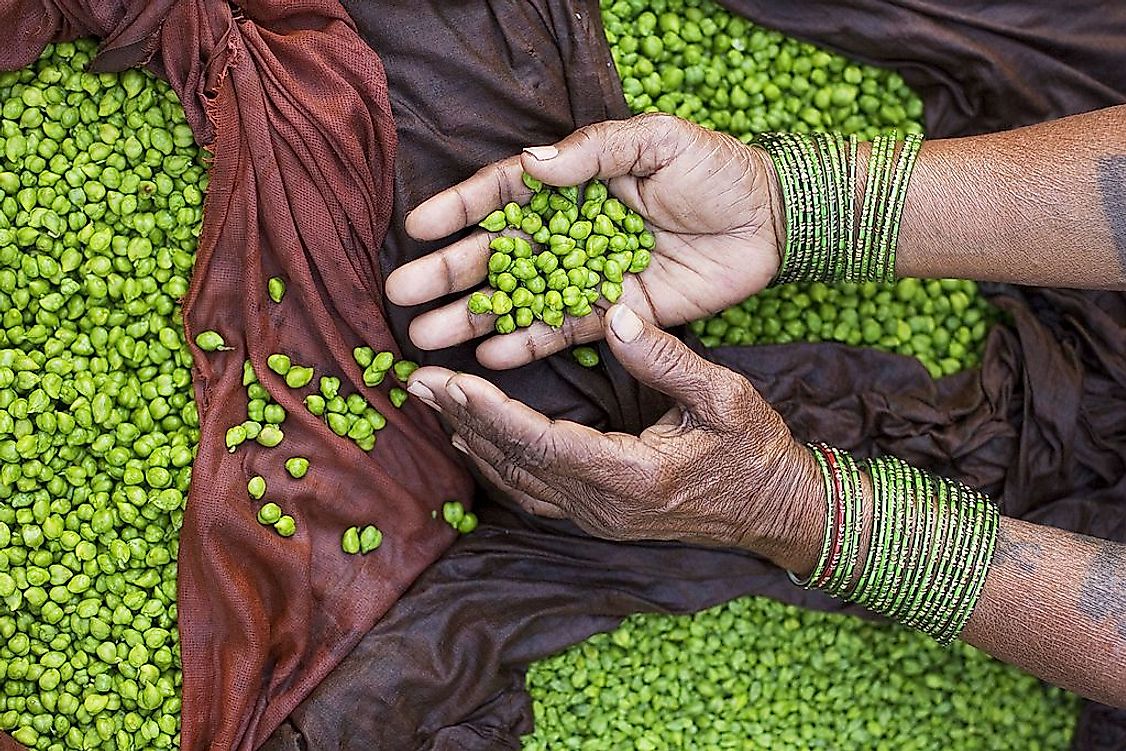
Neolithic founder crops which are also known as primary domesticates consist of eight species of plants that were first domesticated by the early Holocene era, especially among Pre-Pottery Neolithic A and Pre-Pottery Neolithic B. The domestication was carried out by farming communities located in the crescent-shaped fertile region of southwest Asia known as the Fertile Crescent. The region is also responsible for the establishment of systematic agriculture in India, North Africa, Persia, the Middle East and Europe. Flax, three kinds of cereal, and four types of pulses were the eight first crops to be domesticated by humankind.
8. Flax
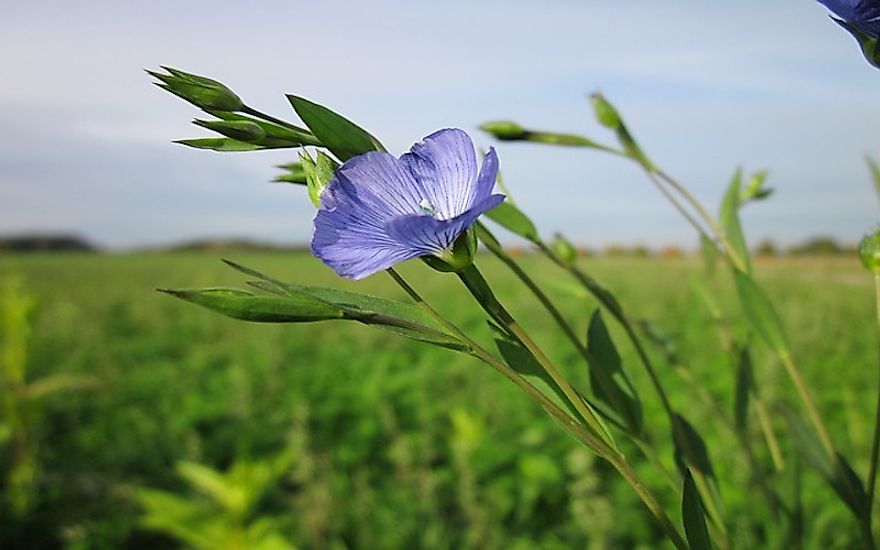
Flax (Linum usitatissimum), also known as linseed or common flax, is a plant species of the Linum genus and the Linaceae family. The word flax can either refer to unspun fibers of the flax plant or the plant itself. Flax is both a fiber and food crop which is cultivated in different areas of the world where climates are cooler. Western countries make textile from flax known as linen which is traditionally used to make undergarments, table linen, and bed sheets. Flax is also used to produce oil called linseed oil. Flax is only known as a cultivated plant species which appears to have been domesticated from Linum Bienne, a wild species known as pale flax. The cultivated plant comprises of slim stems and can grow to a height of 3 feet and 11 inches. The domestication of flax took place in the Fertile Crescent region while evidence of wild flax being used as a textile by human beings traces its roots to the present day country of Georgia about 30,000 years ago. Evidence of oilseed flax domestication dates back around 9,000 years to Syria. The crop spread to other countries like Switzerland and Germany by 5000 years ago. Within the same period there was cultivation of the plant in China and India.
7. Bitter vetch
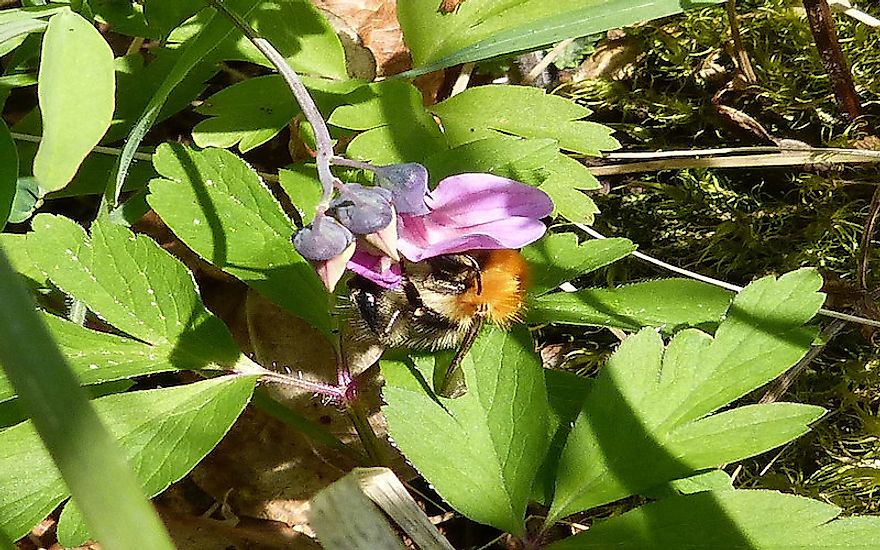
Bitter vetch (Vicia ervilia), also called ervil, is a Neolithic leguminous grain crop which is found in the Mediterranean region. The crop is also known as rovi in Greek, gavdaneh in Persian, yero in Spanish, burçak Turkish, and kersannah in Arabic. The grain's nutritional value for ruminant cattle has guaranteed its continued cultivation in Spain, Turkey, and Morocco. Since Bitter vetch is easy to harvest and cultivate it can be easily grown on shallow alkaline soils. When the grain splits it looks like red lentils. For the grain to be consumed by humans, the seeds are removed via leaching by use of boiling water to remove the bitterness. Bitter vetch is a great grain to be used as a feed concentrate for both cattle and sheep. Since the beginning of agriculture, the crop has been strongly considered as an excellent component for adding nutritional value to bulk feeds. The plant was first grown about 9,500 years ago around the near east.
6. Chickpea
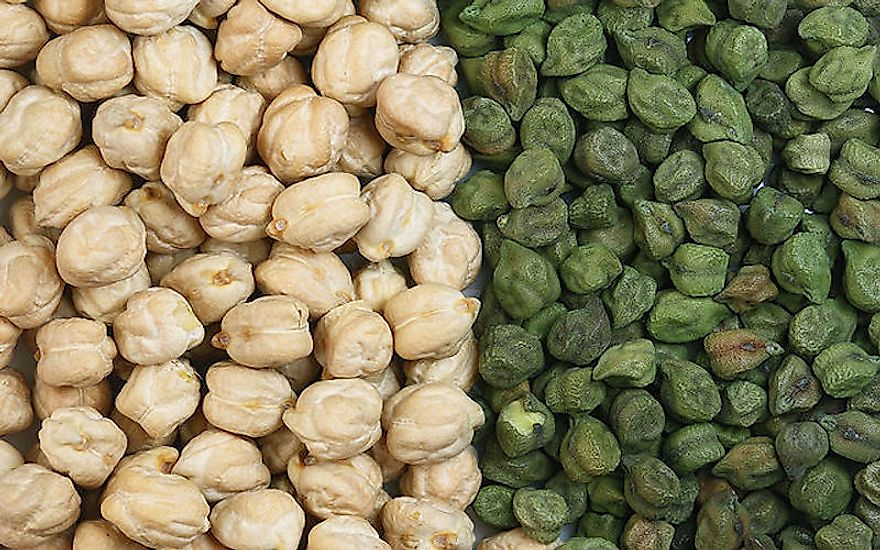
Chickpea (Cicer arietinum) is a leguminous crop belonging to the Fabaceae family and the Faboideae subfamily. Chickpea has a variety of different types know as Egyptian pea, garbanzo, gram, garbanzo bean, and Bengal gram. The seeds of chickpea tend to have high protein content. Chickpea is among the earliest legumes to be cultivated as evidence of 7,500-year-old remains have been identified in the Middle East. Chickpeas grow to a height of about 8-20 inches. The crop which is a type of pulse contains small feathery leaves on both sides of the stem. The plant has one seed pod which contains about one or two seeds.
5. Pea
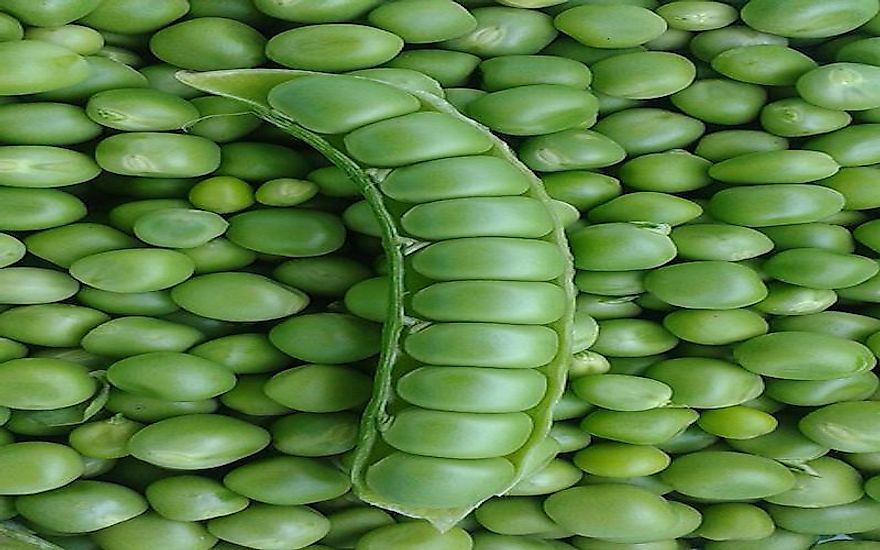
Pea (Pisum sativum) is a small spherical seed found inside the pod fruit. Botanically, pea pods are fruits since they are developed from the pea's ovary and contain seeds. Inside each pod there are seeds. The term pea is used by other plant species from the family Fabaceae such as cowpea (Vigna unguiculata), pigeon pea (Cajanus cajan) including seeds from some the Lathyrus species. Peas are annual plants with a life cycle of only one year and are grown in numerous regions around the world since they are cool-season crops. Depending on the region, peas can be planted from winter to early summer. The earliest archaeological findings date back to the Neolithic era in the present day countries of Greece, Syria, Turkey, and Jordan. The crop was cultivated in Egypt from around 4800 – 4400 BC near the Nile delta. They were found in Afghanistan in 2000BC and India around 2250-1750 BC
4. Lentil
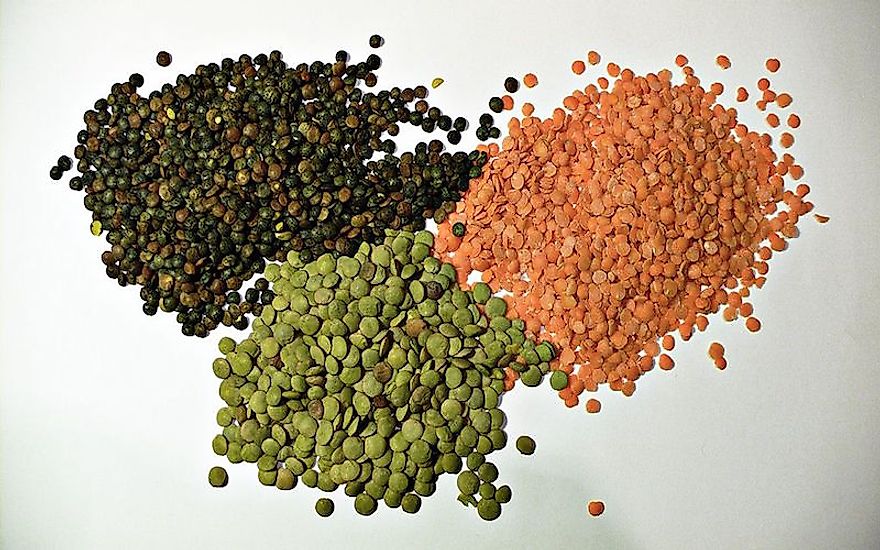
Lentils (Lens culinaris) are edible grain seeds referred to as pulse belonging to the family Fabaceae. The lentil is a bushy leguminous annual plant that is known to have seeds that are lens shaped. The plant is approximately 16 inches tall and has seeds that grow in pods, typically only two seeds inside the pod. Lentils are famous in the South Asian cuisine usually consumed with rice or rotis. Lentil is the dietary staple in regions of Nepal, Pakistan, India, and Bangladesh. Lentils are also cultivated as a food crop with a majority of the production coming from India, Canada, and Australia. Lentils have been consumed by humans since the aceramic Neolithic period and it is among the forst domesticated crops in the near east. Evidence indicate that lentils were consumed at around 9,500 to 13,000 years ago.
3. Barley
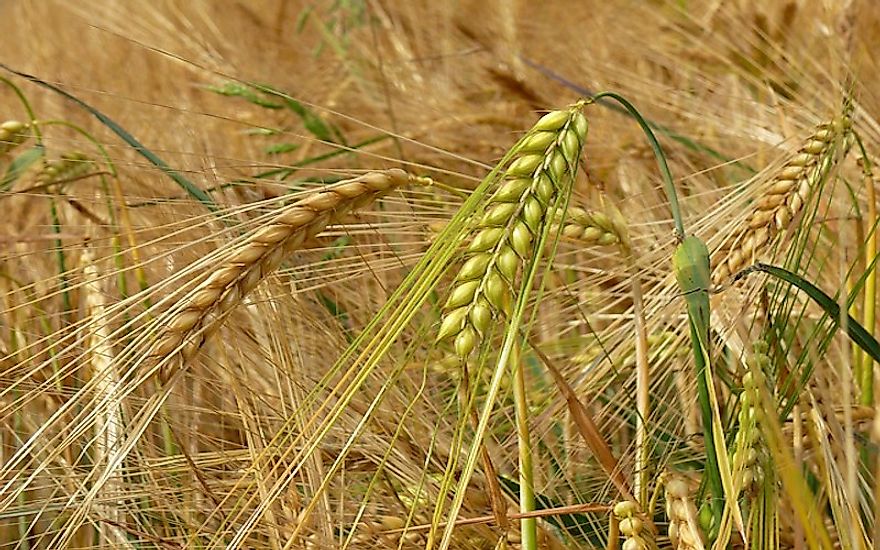
Barley (Hordeum vulgare L.) is a member of the grass family and it is a primary cereal grain that is cultivated throughout the world in regions with temperate climates. Barley was among the first grains to be grown in Eurasia about 10,000 years ago. Traditionally, the crop was used as a fermentable component for several distilled beverages and beer, as well as components of certain health foods and animal fodder. Barley is also used in the production of barley bread and in making stews and soups. The grains are used to produce malt. Barley was ranked number four among grains in quantity produced with approximately 144 million tons in 2014. Barley was ranked behind corn, rice, and wheat.
2. Einkorn wheat
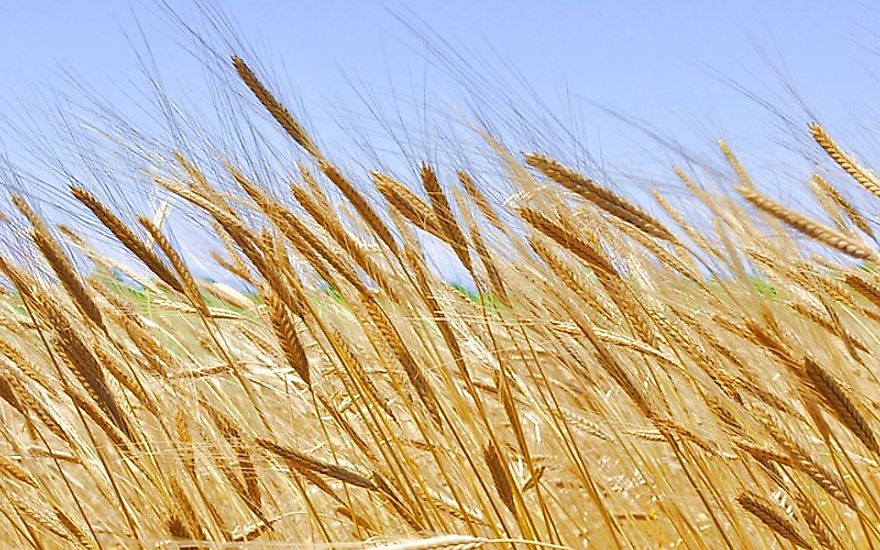
Einkorn wheat (meaning "single grain" in German) is used to either refer to the wild species of the crop or its domesticated form. However, the wild and domesticated Einkorn wheat species are considered separate species. The crop is among the first eight crops to be domesticated and cultivated. The domestication of the crop dates back between 10,600 and 9,900 ago from Cafer Höyük, Çayönü and two early archeological sites located in Turkey.
1. Emmer wheat
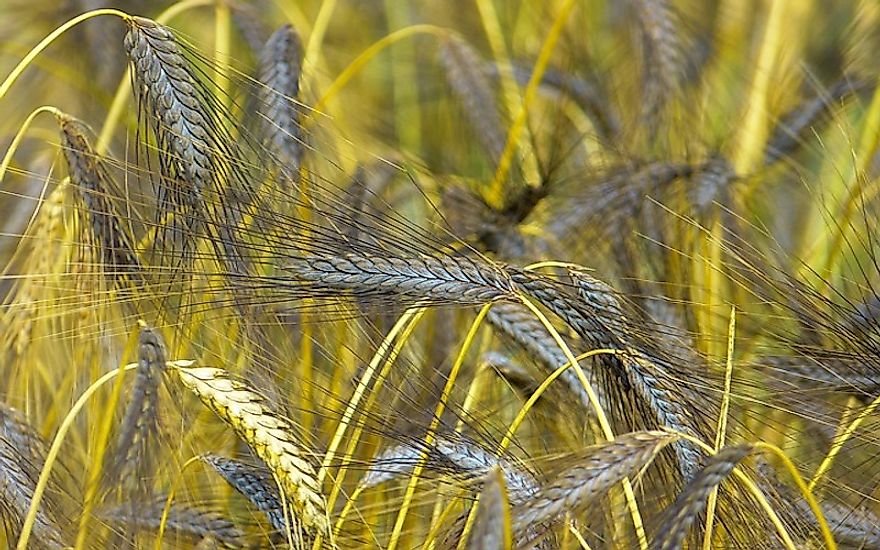
Emmer wheat is also known as hulled wheat or farro in Italy. Just like Einkorn wheat, Emmer wheat exists in both wild and domesticated species. The primary difference between the wild and the domesticated species is that the seeds of domesticated emmer do not burst when ripe like in the wild emmer wheat species but rather stays intact which makes harvesting an easier task. Emmer wheat was also among the first crops to be domesticated in the Western Asia region. The crop was widely cultivated, but at present, its cultivation is restricted in the mountainous region of Asia and Europe. The emmer wheat was collected by hunters and gatherers for thousands of years before they were domesticated in about 10,000 to 9,400 years ago.











